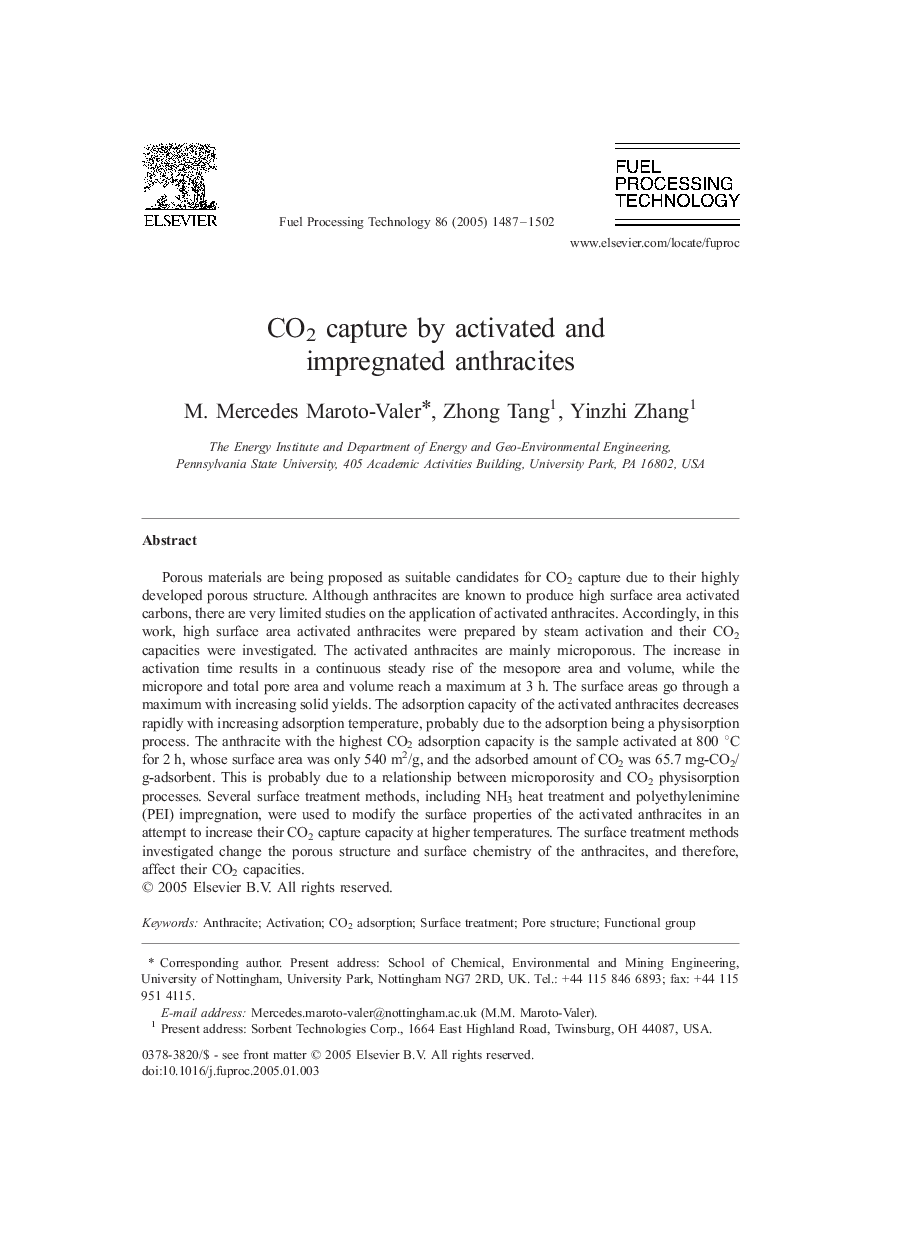| Article ID | Journal | Published Year | Pages | File Type |
|---|---|---|---|---|
| 9632204 | Fuel Processing Technology | 2005 | 16 Pages |
Abstract
Porous materials are being proposed as suitable candidates for CO2 capture due to their highly developed porous structure. Although anthracites are known to produce high surface area activated carbons, there are very limited studies on the application of activated anthracites. Accordingly, in this work, high surface area activated anthracites were prepared by steam activation and their CO2 capacities were investigated. The activated anthracites are mainly microporous. The increase in activation time results in a continuous steady rise of the mesopore area and volume, while the micropore and total pore area and volume reach a maximum at 3 h. The surface areas go through a maximum with increasing solid yields. The adsorption capacity of the activated anthracites decreases rapidly with increasing adsorption temperature, probably due to the adsorption being a physisorption process. The anthracite with the highest CO2 adsorption capacity is the sample activated at 800 °C for 2 h, whose surface area was only 540 m2/g, and the adsorbed amount of CO2 was 65.7 mg-CO2/g-adsorbent. This is probably due to a relationship between microporosity and CO2 physisorption processes. Several surface treatment methods, including NH3 heat treatment and polyethylenimine (PEI) impregnation, were used to modify the surface properties of the activated anthracites in an attempt to increase their CO2 capture capacity at higher temperatures. The surface treatment methods investigated change the porous structure and surface chemistry of the anthracites, and therefore, affect their CO2 capacities.
Related Topics
Physical Sciences and Engineering
Chemical Engineering
Chemical Engineering (General)
Authors
M. Mercedes Maroto-Valer, Zhong Tang, Yinzhi Zhang,
